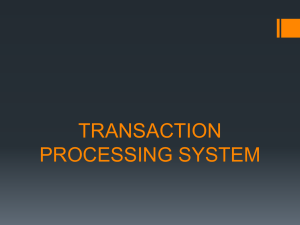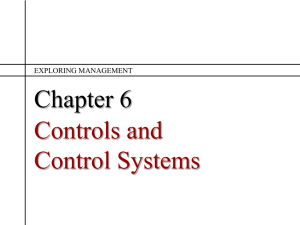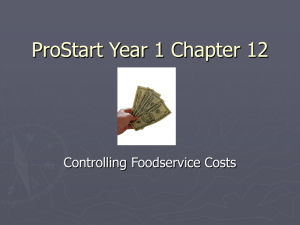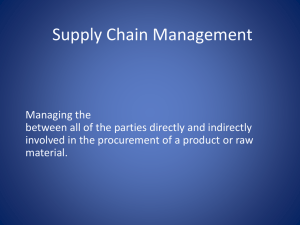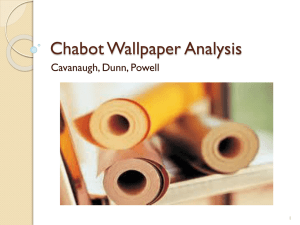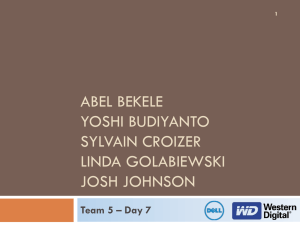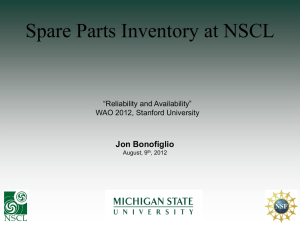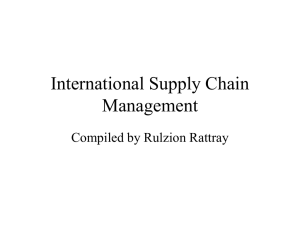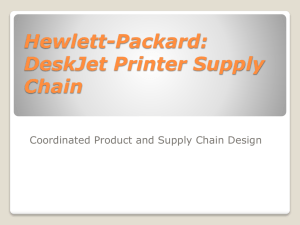Kickoff Presentation - Cornell Information Technologies
advertisement
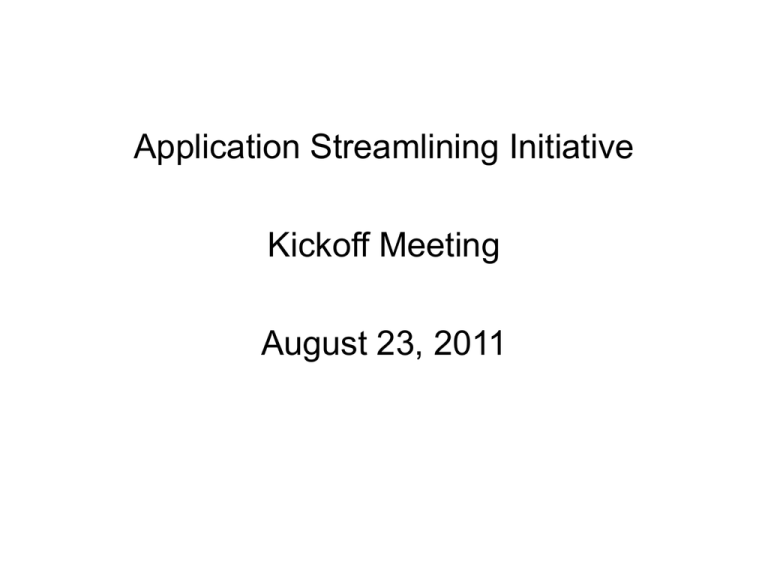
Application Streamlining Initiative Kickoff Meeting August 23, 2011 Application Streamlining Application Streamlining will allow the synchronization of IT priorities with business priorities. Applications will be managed as key assets of the institution. Application Streamlining Components • Application Portfolio Management, or APM, is a process that evaluates the entire institution’s set of applications. It is used to categorize each application based upon its value to the organization and the cost of operation. • Application Rationalization is the process that decides the disposition or action plan for each application in the portfolio. Likely outcomes are: Retire– for low value, high cost applications Re-platform – for high value, older technology applications Reinvest – for high value, low cost applications Consolidate – for redundant applications Cornell Current State Bain’s review of applications and services in the Cornell IT environment cited the following weaknesses: •Significant waste and duplication •Poor prioritization •Lack of collaboration across units •Unclear/non-existent guidelines & standards •Application development resources highly variable across units •Resources often lack breadth and/or depth •Development capabilities not aligned with program needs The Application Streamlining Initiative will address each of these weaknesses in a program of continuous improvement. Steps to Effective Application Streamlining Goal: Move toward an application portfolio containing high value, low cost applications Steps to success: • Ensure upper management support • Establish objective evaluation criteria • Gather an appropriate team • Develop a deliberate methodology with transparent processes • Manage the effort as a project • Leverage the results The Challenges • Construct meaningful definition of what constitutes an application. • Define information to be gathered in the inventory – important technical characteristics and “fit,” measures of application scope and value, and cost elements. • Apply objective assessment criteria against inventory information sufficient to place applications in the appropriate quadrants of the Rationalization Start Chart on the next slide. • Maintain appropriate stakeholder engagement throughout. • Develop initial recommendations. • N.B.: Many findings and recommendations will be preliminary until the inventory is completed for most, if not all, campus units. Application Rationalization Star Chart High Value, Low Cost Move to less expensive platforms Keep current with updates and training Low Value, High Cost Low Value, Low Cost Retire or replace to free up IT resources Assess whether these are really necessary Value High Value, High Cost . Cost Project: Score Date Scored: 0 Scored By: # 1 2 3 4 5 Factors Criteria Directly results in bottom line income increase or cost reduction Ability to repurpose headcount (1 FTE or greater) Efficiency/ ROI Ability to eliminate system/application (30) Incremental time savings (<1 FTE) No improvement in efficiency or cost savings Will result in increased cost or inefficiency post-project Mitigates major compliance/legal/security/liability risk Mitigates vendor risk (e.g. end of support) Mitigates system stability or Institutional Risk business process risk Mitigates minor (30) compliance/legal/security/liability risk Mitigates risk of impacting existing operations Prevents/mitigates errors or low end-user satisfaction No risk mitigation Directly Supports Academic Mission Strategic Goal Directly Supports Research Mission Directly Supports Outreach Mission (20) Directly Supports Administration University-Wide or External to Cornell All Faculty or Staff or Students or Impact Alumni Multiple Colleges/Units (20) Single College/Unit or Multiple Departments Single Department Bonus (Governance Document reason for bonus points.. Crit Score Select (X) Result Score 30 25 20 0 10 0 -10 30 25 20 15 0 15 10 0 20 20 10 5 0 20 16 12 0 8 5 0 Pilot Planning • Startup – 3 weeks – Kickoff meeting, methodology, definitions, timeline • Data Collection – 3 weeks – Prepare survey instrument, interview stakeholders, organize data, present inventory • Analysis – 3 weeks – Assign business value, assign technology value, assess portfolio, review with stakeholders • Recommendations – 2 weeks – Find targets of opportunity, recommend optimization strategy • Complete – 1 week – Write report, lessons learned Roles and Responsibilities • Executive Sponsorship – Stay informed. Take ownership – Allocate appropriate business staff for value analysis • Business Analysts – Prepare Inventory Templates – Prepare Business Questions – Conduct Interviews • IT Professionals – Decide Information to Capture on Applications – Document Applications Inventory • OIT Staff – Facilitate Process & Projects(s) – Prepare for Campus Engagement Pilot Results • Open, Transparent Application Inventory – Can be modified – New applications are compared with existing inventory • Star Chart with Value/Cost Determinations – Applications are within unit – Relative comparison more important than absolute • Application Rationalization Recommendations Next Steps • • • • • Complete Application Inventory Template Assign Business Owner/Expert to Each Application Complete Business Value Assessment Template Complete Value Analysis Methodology Complete Technology Assessment Methology


